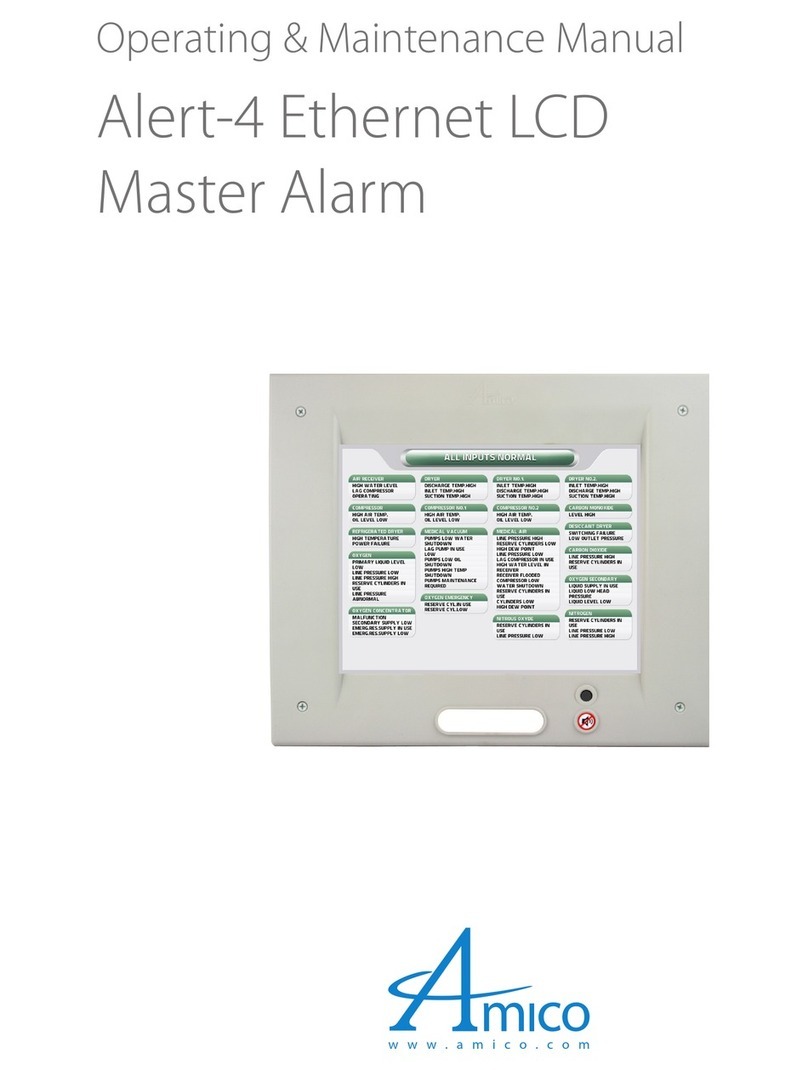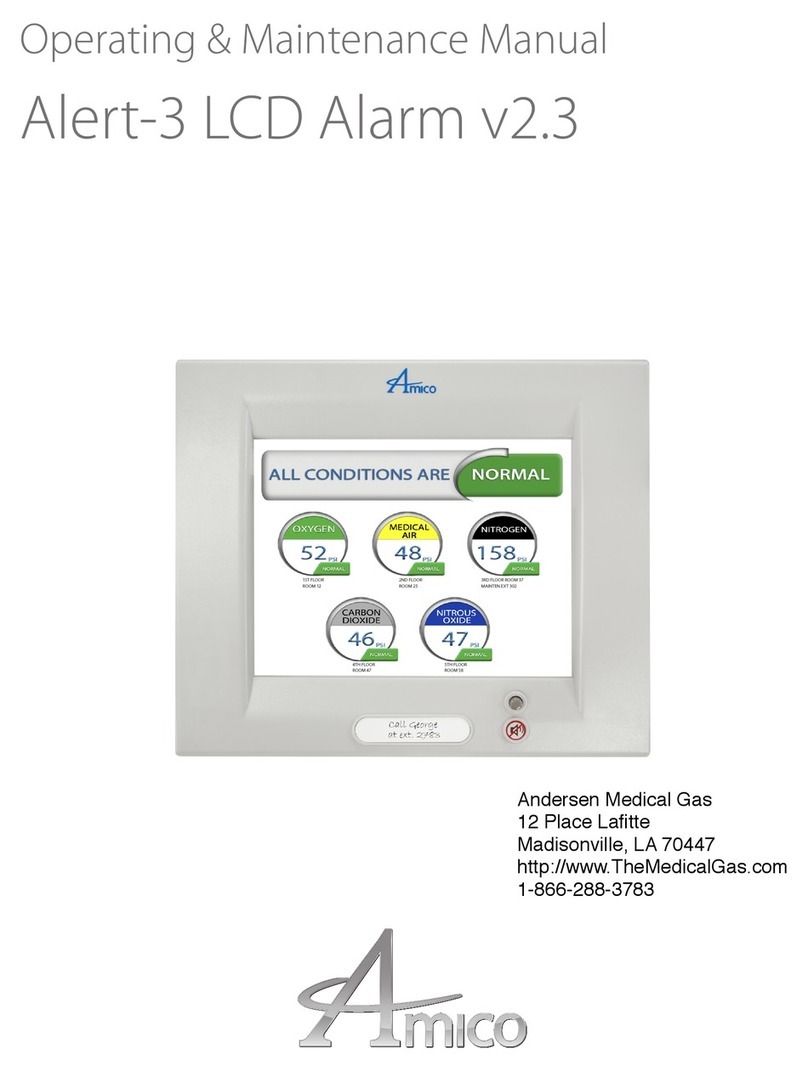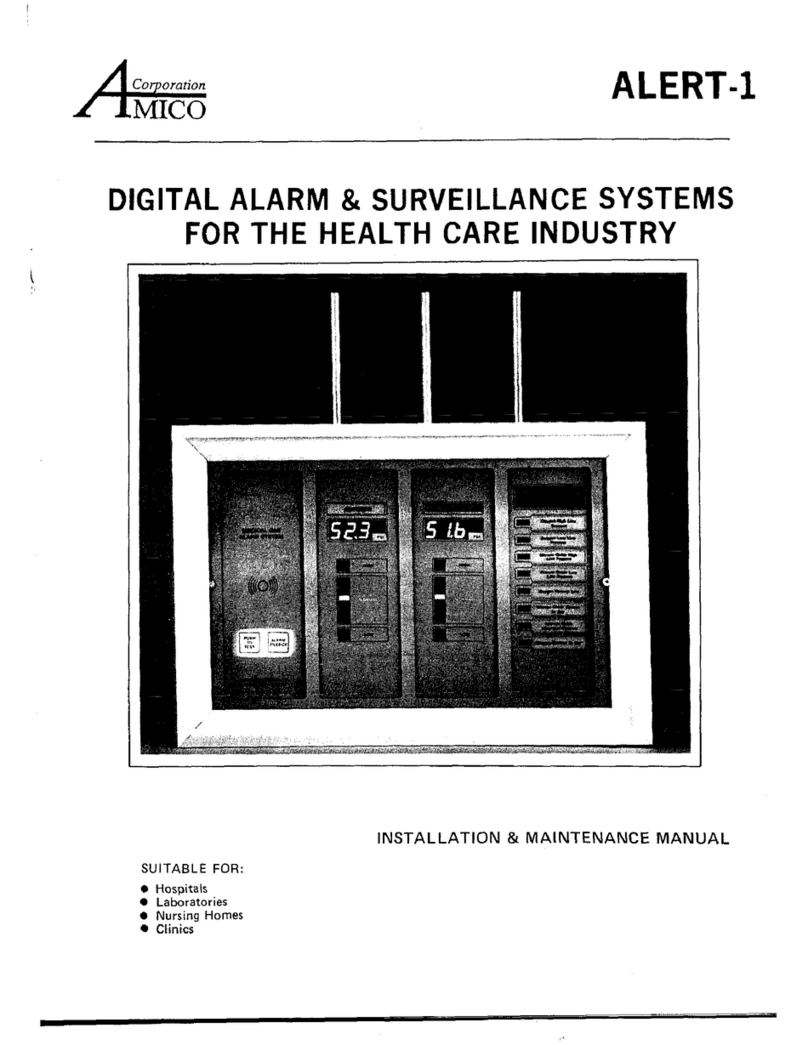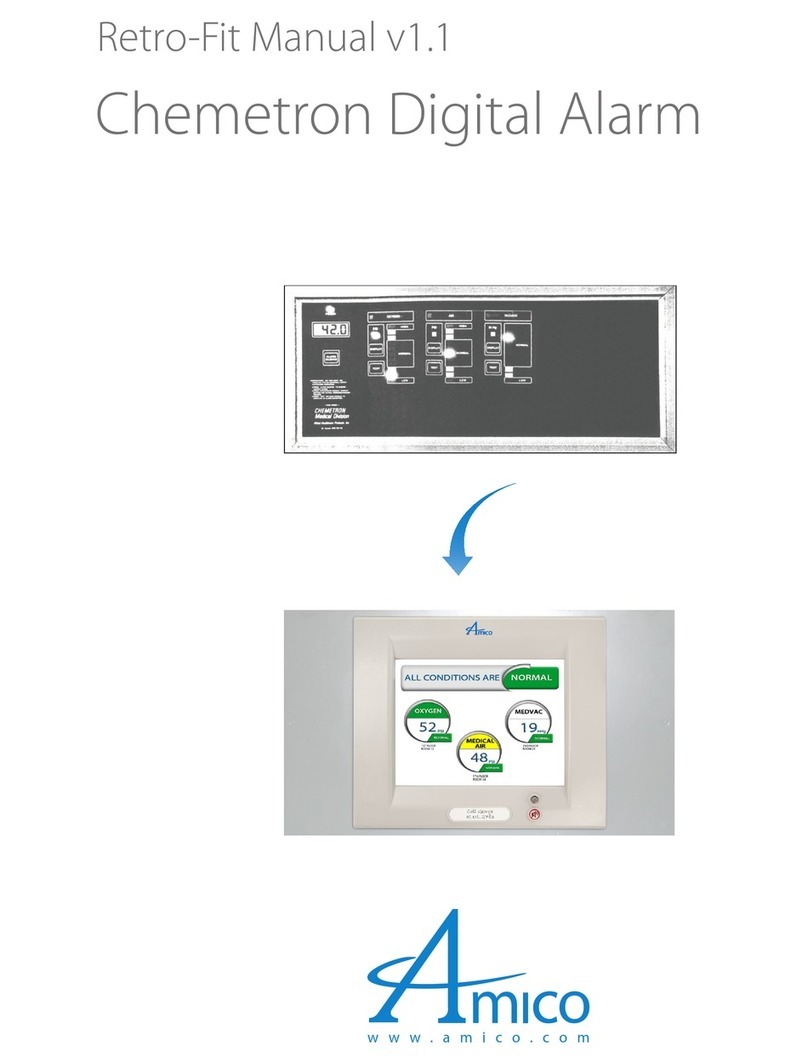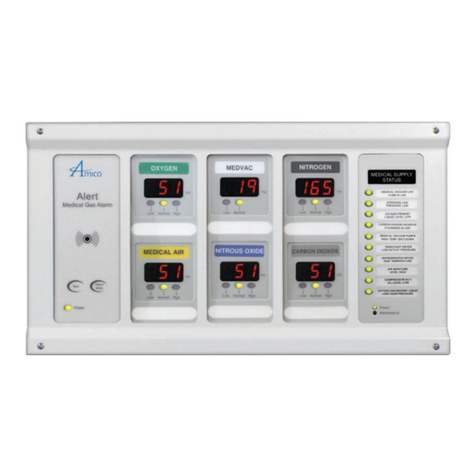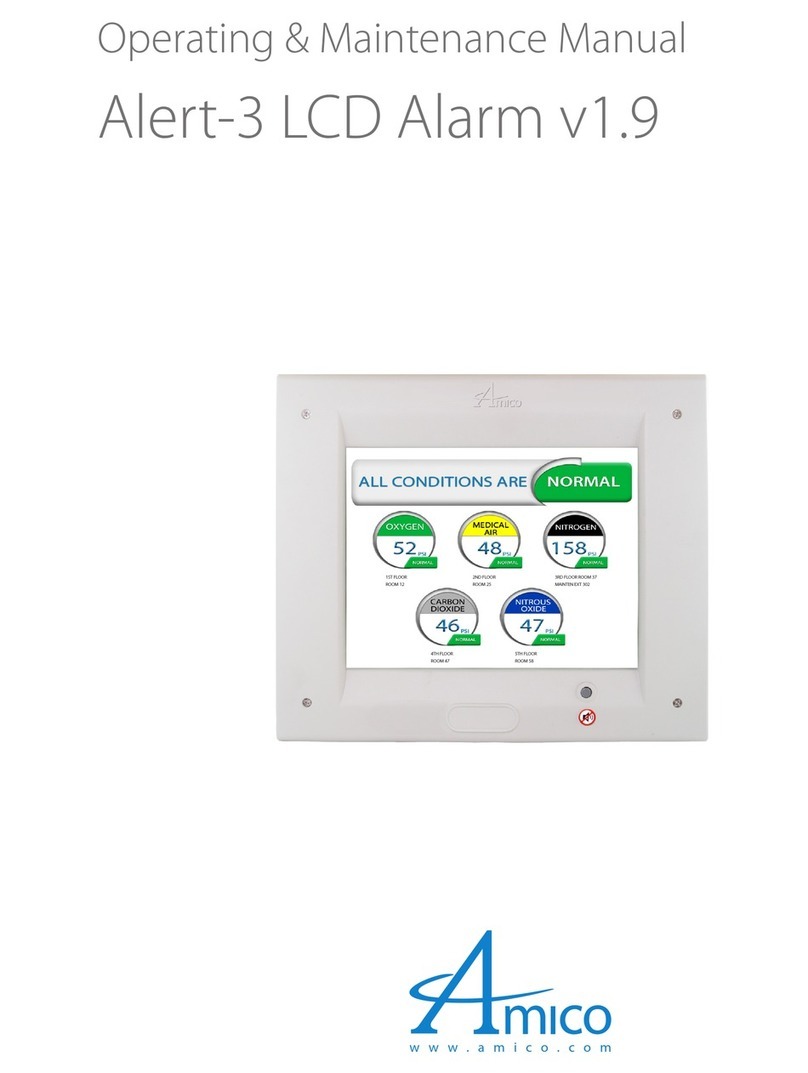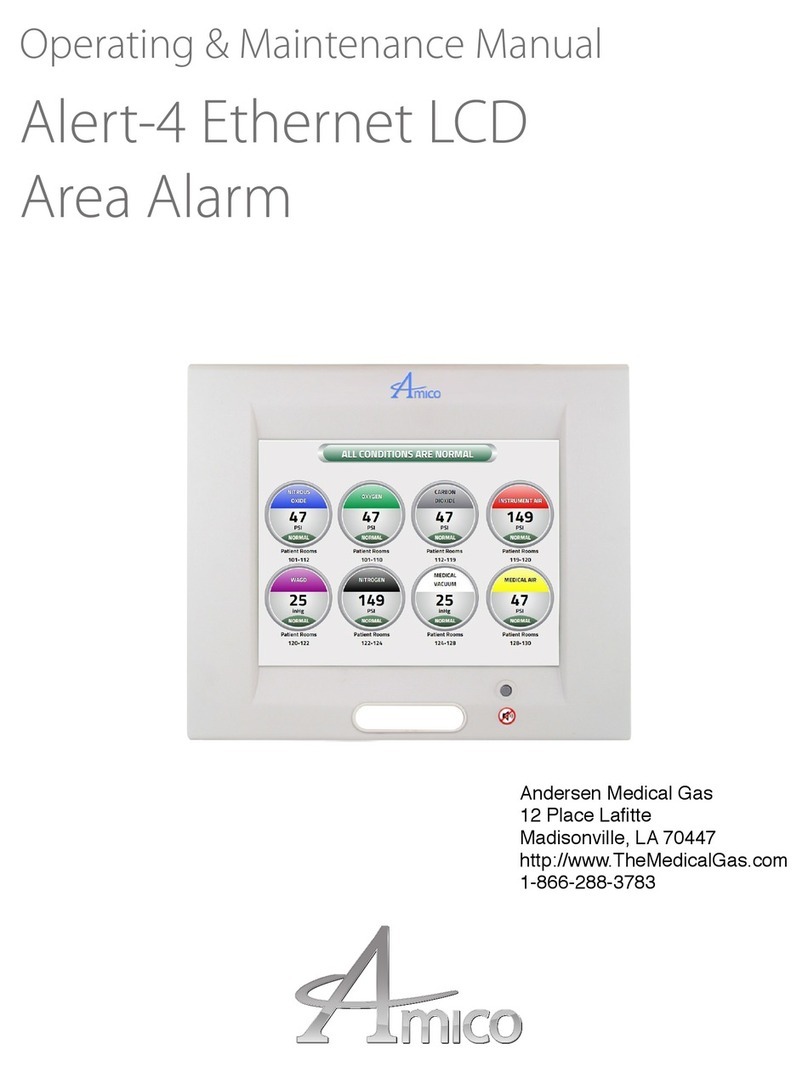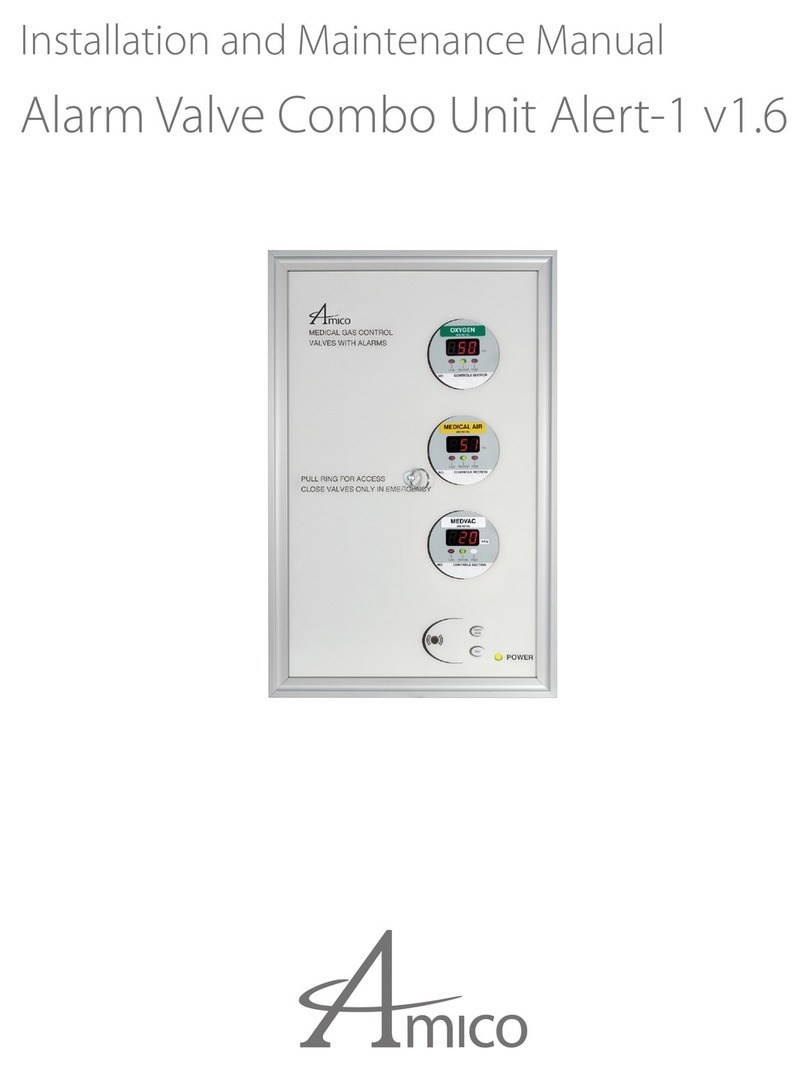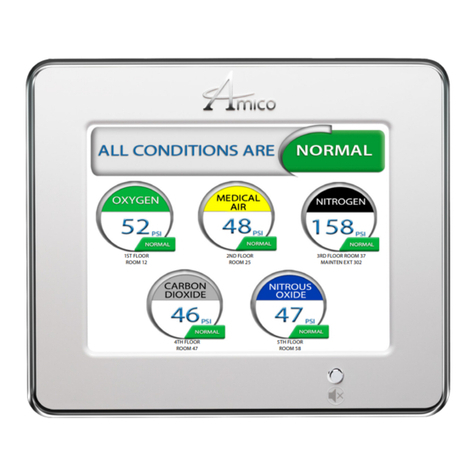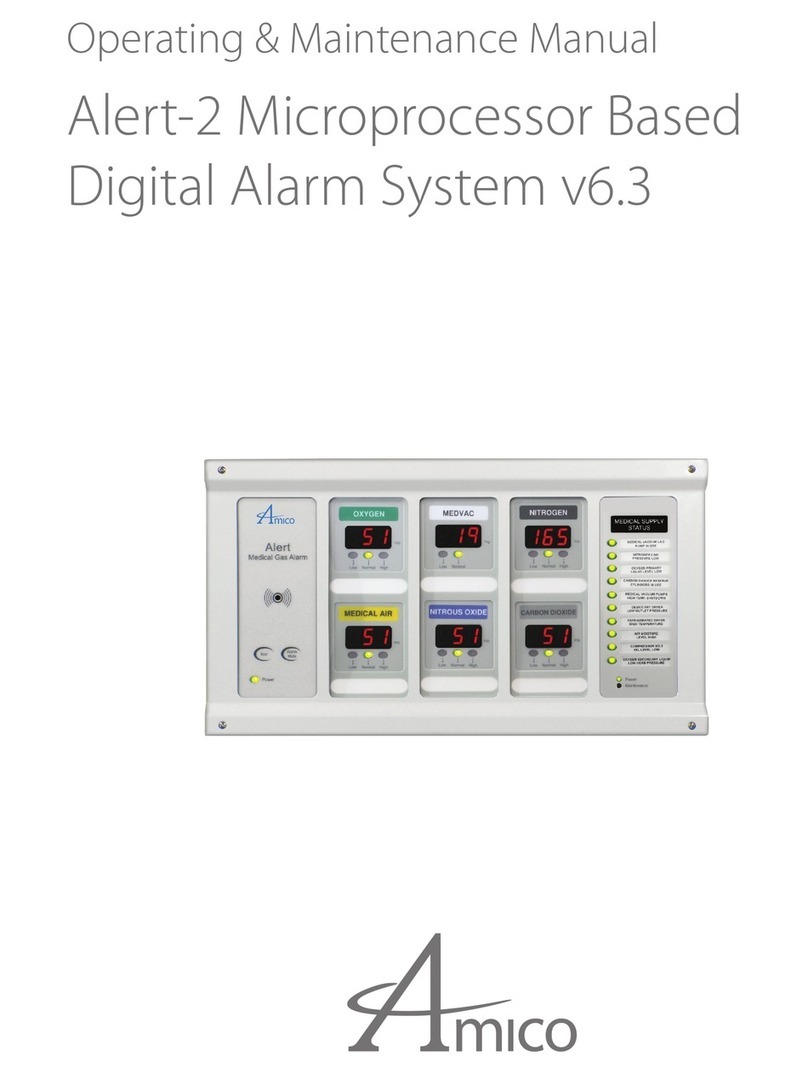
8Amico Corporation
Amico Microprocessor Based Alarm
Page: 12
CAUTION: The microprocessor circuitry on the ALERT-2 alarm con-
tains sophisticated integrated semiconductors. If it becomes necessary
to remove a module, PLEASE hold the boards by the edges. DO NOT
TOUCH any of the components on the board. Static discharge can
cause the modules to malfunction, or become damaged.
SENSOR
LOCAL (In the Back Box)
1. Locate the gas specific
sensor module to be in-
stalled.
2. In the back box, there are
colour coded gas labels
located under the DISS
Demand check valves. Each
label identifies where each
sensor module is to be
placed.
3. The sensor module contains
a gas specific DISS fitting.
Push the sensor module
hex-nut and nipple adapter
up into the demand check-
valve. With a wrench, tighten the nut so that it makes a good seal.
NOTE: Pressure on sensors are not to exceed 250psi
for Pressure sensors and 30” for Vacuum sensors
REMOTE (Outside the Back Box)
1. Connect a Tee (supplied
by others) to the pipeline
with a 1/4" NPT female
connection that will accept
the DISS Demand check-
valve.
2. Locate the gas specific
sensor module to be
installed.
3. Thread the DISS Demand
check-valve into the
correct gas pipe line.
4. The sensor module contains a gas specific DISS fitting. Push the
sensor module hex-nut and nipple adapter up into the demand
check-valve. With a wrench, tighten the nut so that it makes a
good seal.
B: REMOTE (outside the back box)
i. Connect a tee (supplied by others) to the pipeline with a 1/4”NPT female
connection that will accept the DISS Demand Check Valve.
ii. Locate the gas-specic sensor module to be installed.
iii. Thread the DISS Demand Check Valve into the correct gas pipeline.
iv. The sensor module contains a gas-specic DISS tting. Push the sensor
module hex-nut and nipple adapter into the demand check-valve. With a
wrench, tighten the nut so that it makes a good seal.
STEP 5: FRAME/MODULE ASSEMBLY
i. Remove the frame/module assembly from its protective box.
ii. Remove the corner screws from the front frame section (4 screws).
iii. Attach the LCD module to the back box assembly by using at head screws
(provided with frame in a plastic bag) to the hinge located on the back box.
iv. Attach the frame wire with 2 dome head screws (provided with frame in a
plastic bag). This will allow the frame assembly and back box to be fastened
securely together.
CAUTION: The microprocessor circuitry on the ALERT-3 alarm contains sophisticated integrated
semiconductors. If it becomes necessary to remove LCD circuit board, PLEASE hold the boards by the
edges. DO NOT TOUCH any of the components on the board. Static discharge can cause the modules
to malfunction or become damaged.
Amico Microprocessor Based Alarm
Page: 4
USER RESPONSIBILITY
The information contained in this Installation and Operation Maintenance
Manual, pertains only to the ALERT-2 microprocessor based digital alarm.
This product will perform to conformity with the descriptions contained in this
manual, when assembled, operated, maintained and serviced in accordance
with the installation instructions provided.
The alarm must be checked periodically. Parts that are broken, missing,
worn, distorted or contaminated, must be replaced immediately. Should such
repair or replacement become necessary, please contact Amico Corporation
or their distributors.
All alarms should not be repaired, or altered without prior written or verbal
approval of Amico Corporation or it’s distributors. Failure to comply will void
all warranty on the alarm.
Statements in this manual preceded by the words WARNING,CAUTION,
DANGER and NOTE are of special significance. Please read these sections
carefully.
WARNING: denotes steps which can prevent injury.
CAUTION: denotes steps which can prevent damage to equipment.
DANGER: denotes steps which can prevent electrical shock to equipment
or to prevent serious injury and/or death.
Installation Guide
